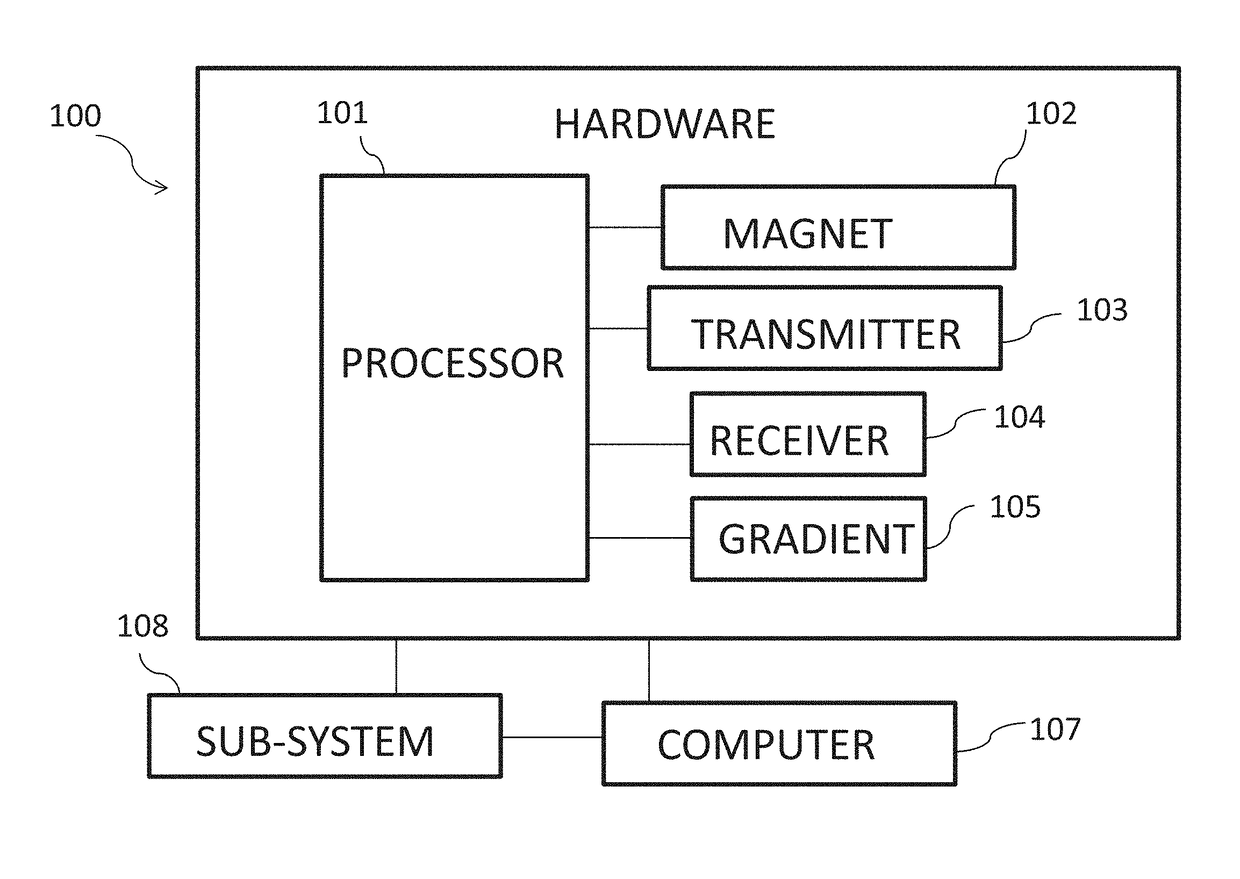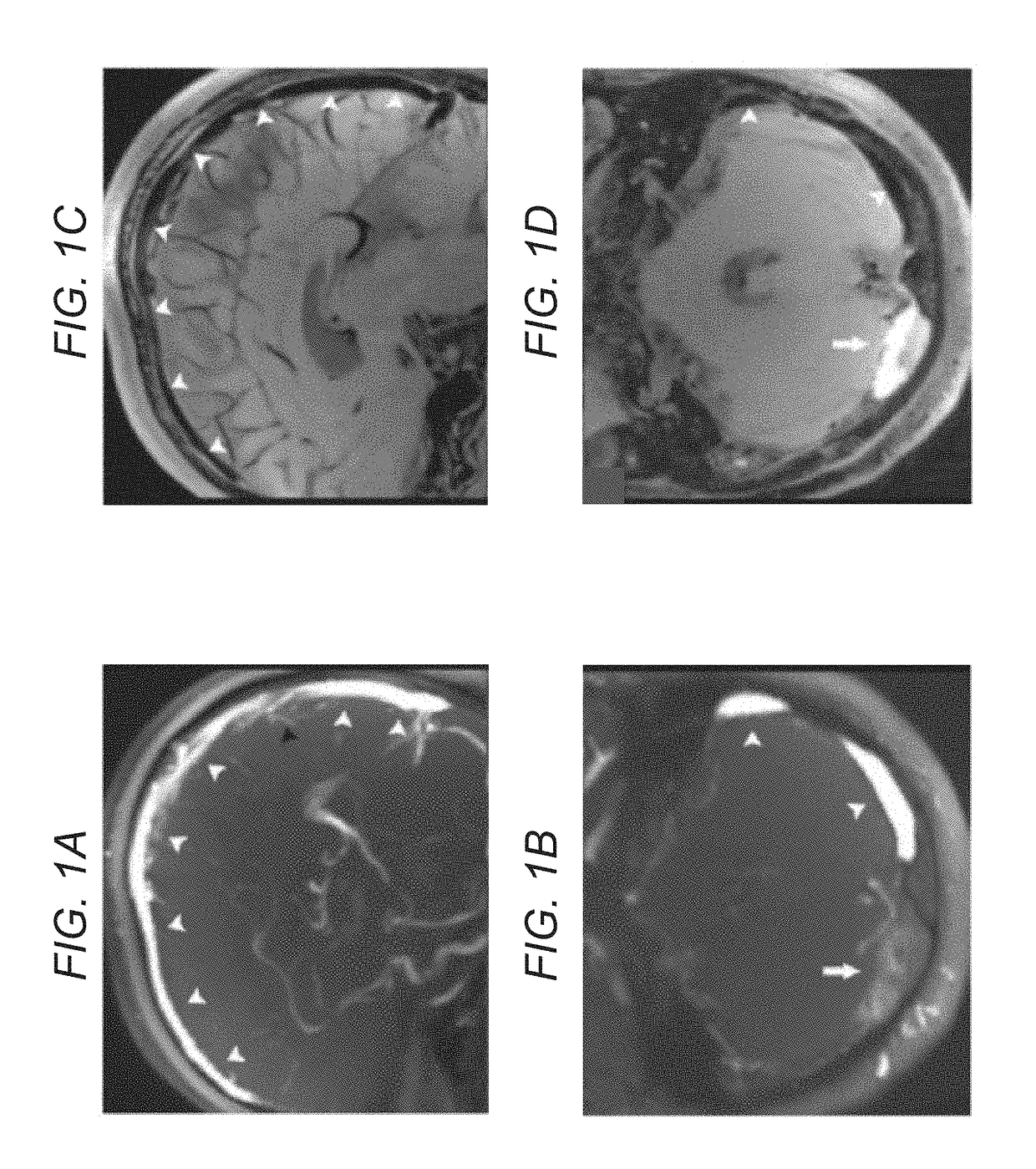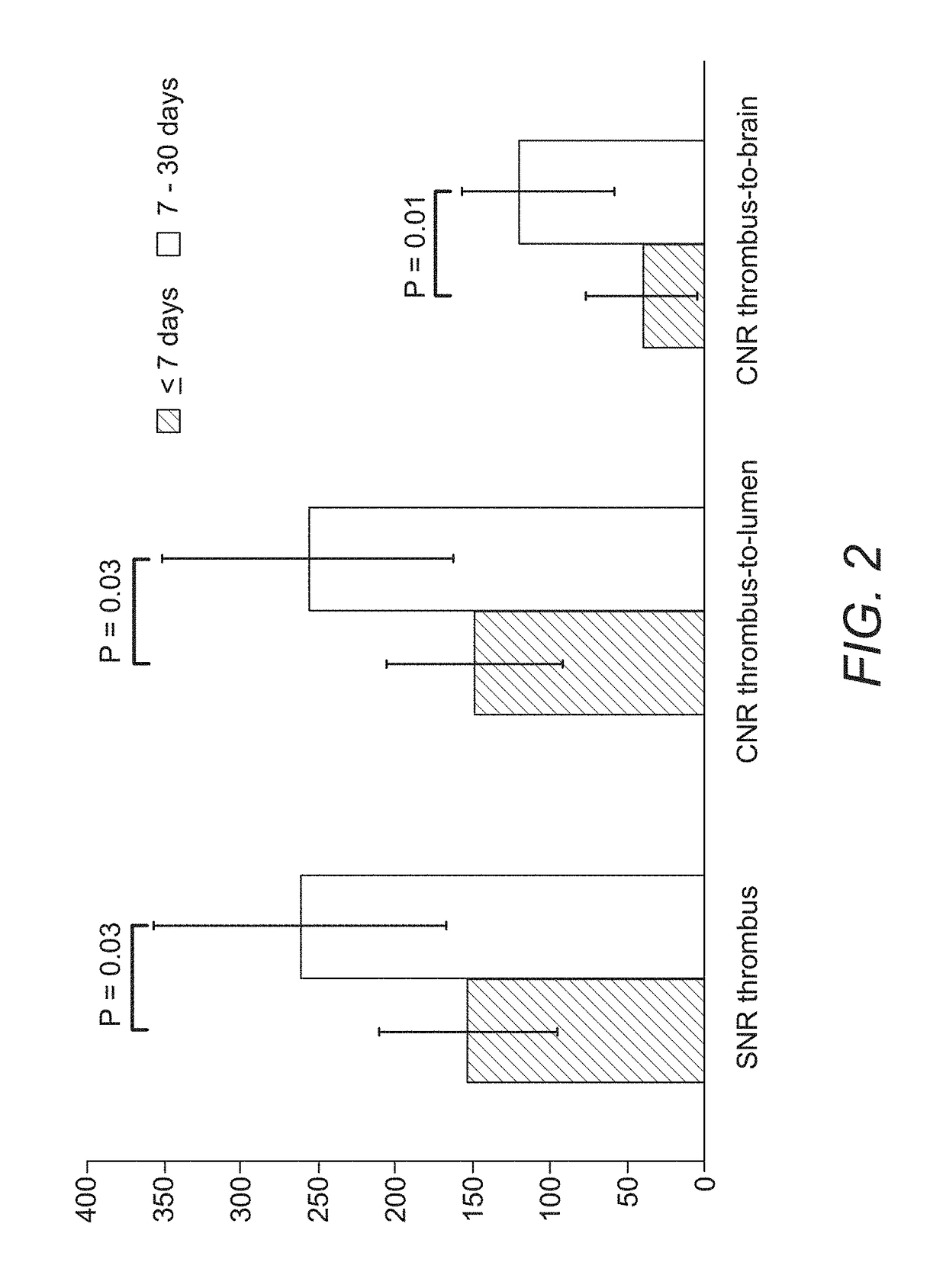Systems and methods for magnetic resonance black-blood thrombus imaging in detection of cerebral venous thrombosis
a magnetic resonance and black blood thrombosis technology, applied in the field of magnetic resonance imaging methods, can solve the problems of difficult to exclude cvt with existing noninvasive imaging modalities, death or permanent disability, and the frequency of unrecognized cvt, and achieve the effect of accelerating imaging speed
- Summary
- Abstract
- Description
- Claims
- Application Information
AI Technical Summary
Benefits of technology
Problems solved by technology
Method used
Image
Examples
example 1
Subjects and Methods
Patients
[0030]Between February 2014 and May 2015, consecutive patients with signs and symptoms suspected of CVT within the past 30 days were prospectively recruited. Exclusion criteria included general contraindications to MR examination and patients with incomplete conventional imaging examinations (CT, MR, and MRV). Informed consent was obtained from all participants, and all protocols were approved by the Institutional Review Board.
Conventional Imaging Evaluation
[0031]Thrombi were defined as intraluminal filling defects detected by conventional imaging techniques. Two readers (J.D. and X.J.) performed a consensus reading of all conventional imaging studies for each patient, including CT, MR, and MRV, with full clinical and outcome information on the patient to obtain a reference standard. The following 14 venous segments were included in evaluations: superior sagittal sinus, inferior sagittal sinus, right transverse sinus, right sigmoid sinus, left transverse ...
PUM
 Login to View More
Login to View More Abstract
Description
Claims
Application Information
 Login to View More
Login to View More - R&D
- Intellectual Property
- Life Sciences
- Materials
- Tech Scout
- Unparalleled Data Quality
- Higher Quality Content
- 60% Fewer Hallucinations
Browse by: Latest US Patents, China's latest patents, Technical Efficacy Thesaurus, Application Domain, Technology Topic, Popular Technical Reports.
© 2025 PatSnap. All rights reserved.Legal|Privacy policy|Modern Slavery Act Transparency Statement|Sitemap|About US| Contact US: help@patsnap.com



